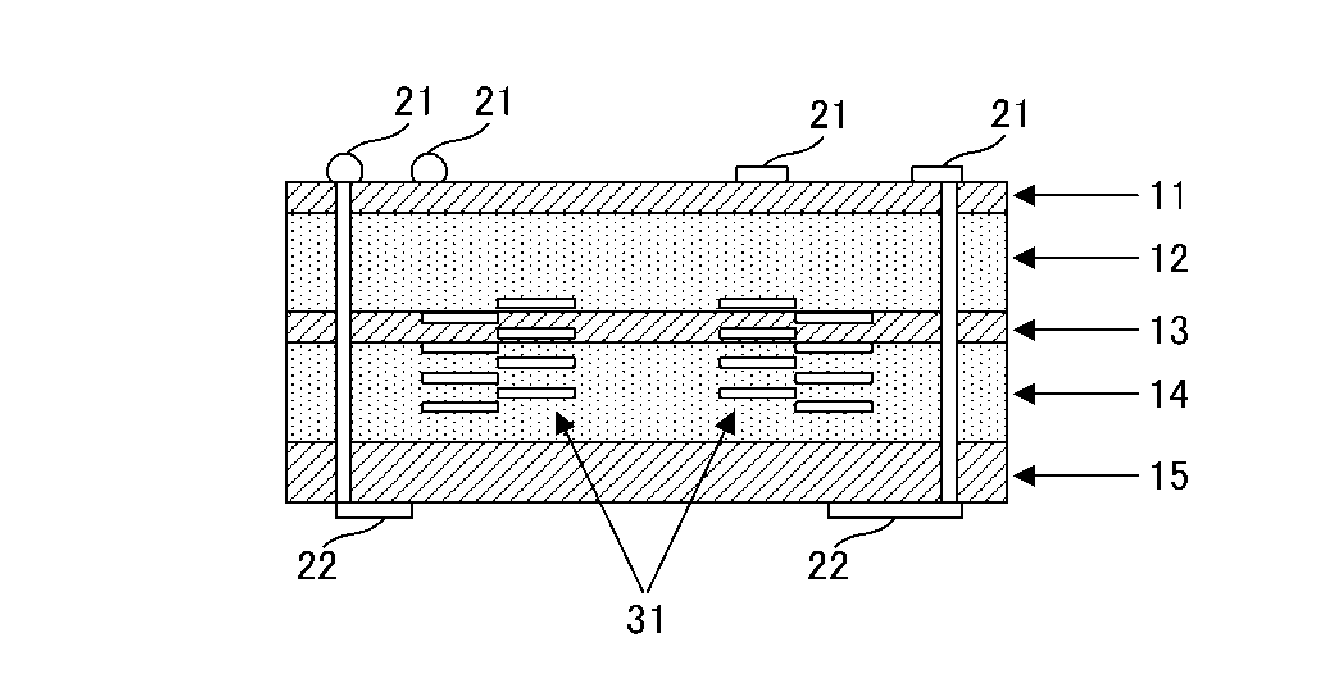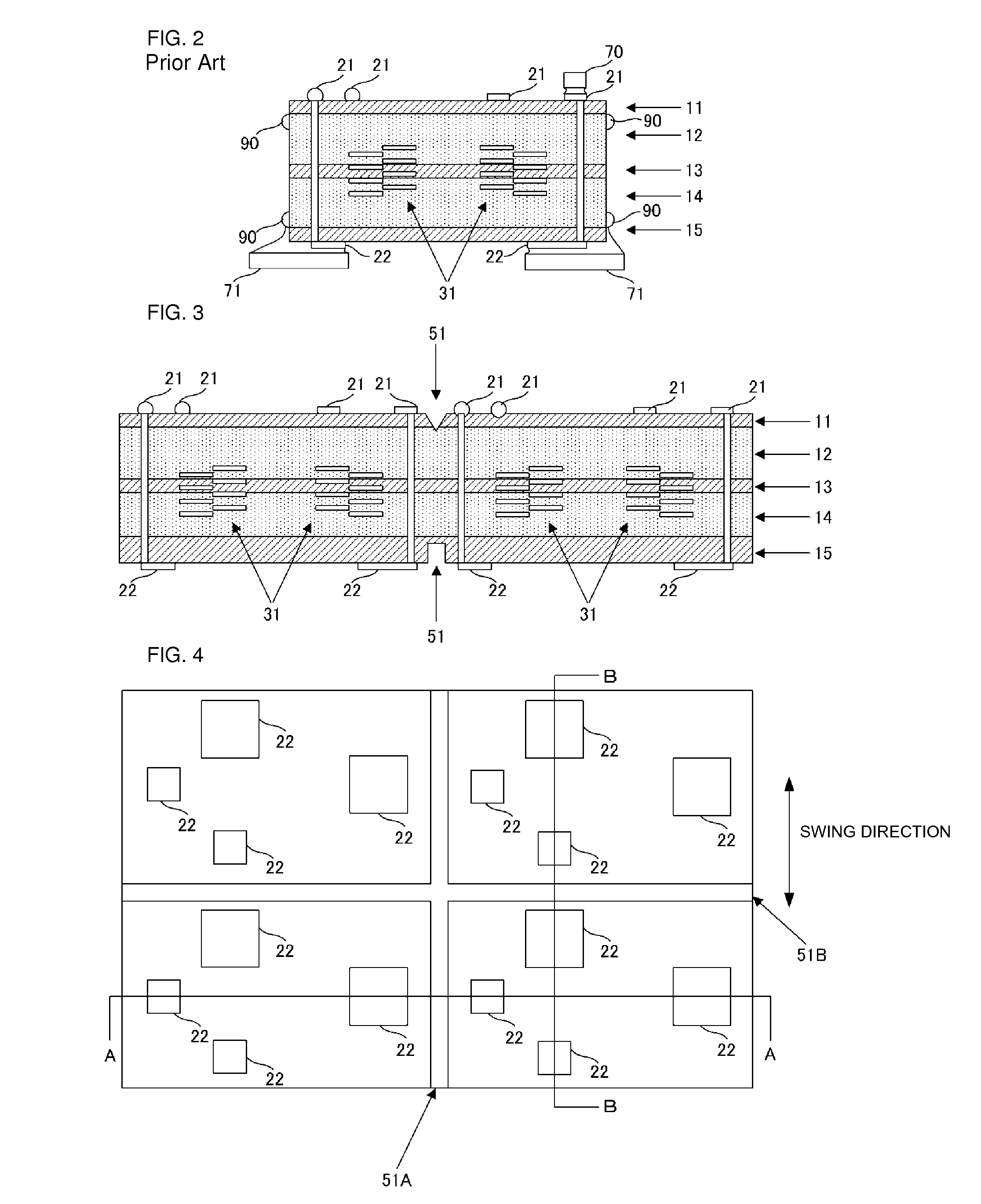Laminated inductor element and manufacturing method thereof
a technology of inductor elements and manufacturing methods, which is applied in the manufacture of coils, basic electric elements, and inductances, etc., can solve the problems of different types of materials, warpage of laminated elements, and inability to alternately laminated elements, so as to prevent the warpage of the entire element, reduce the thickness of the non-magnetic layer, and easy grow
- Summary
- Abstract
- Description
- Claims
- Application Information
AI Technical Summary
Benefits of technology
Problems solved by technology
Method used
Image
Examples
Embodiment Construction
[0027]FIG. 1A is a cross-sectional view of a laminated inductor element according to a preferred embodiment of the present invention. The laminated inductor element is defined by lamination of magnetic ceramic green sheets and non-magnetic ceramic green sheets. In the cross-sectional view illustrated in the present preferred embodiment, the upper side of the drawing corresponds to the upper surface side of the laminated inductor element, and the lower side of the drawing corresponds to the lower surface side of the laminated inductor element.
[0028]The laminated inductor element in the example of FIG. 1A is defined by a laminate having a non-magnetic ferrite layer 11, a magnetic ferrite layer 12, a non-magnetic ferrite layer 13, a magnetic ferrite layer 14, and a non-magnetic ferrite layer 15 sequentially disposed from an outermost layer on the upper surface side toward an outermost layer on the lower surface side.
[0029]On some of the ceramic green sheets defining the laminate, inter...
PUM
| Property | Measurement | Unit |
|---|---|---|
| non-magnetic | aaaaa | aaaaa |
| distance | aaaaa | aaaaa |
| depth | aaaaa | aaaaa |
Abstract
Description
Claims
Application Information
 Login to View More
Login to View More - R&D
- Intellectual Property
- Life Sciences
- Materials
- Tech Scout
- Unparalleled Data Quality
- Higher Quality Content
- 60% Fewer Hallucinations
Browse by: Latest US Patents, China's latest patents, Technical Efficacy Thesaurus, Application Domain, Technology Topic, Popular Technical Reports.
© 2025 PatSnap. All rights reserved.Legal|Privacy policy|Modern Slavery Act Transparency Statement|Sitemap|About US| Contact US: help@patsnap.com



